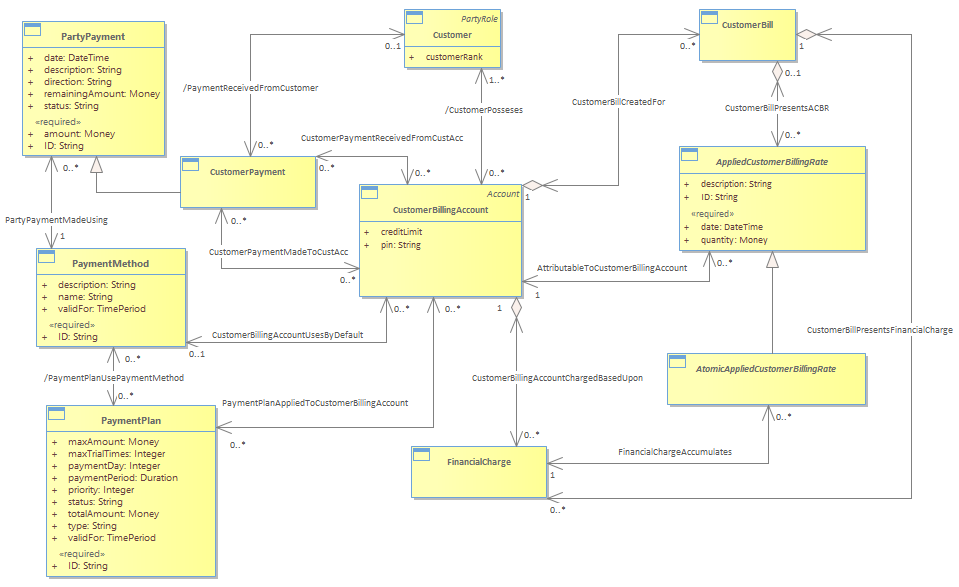Figure C.17 - Customer Payment Scope

|
Project:
|

Figure C.17 - Customer Payment Scope : Class diagram
This section is intended to define the scope of customer payment from the following perspectives. For more information about Payment refers to Party Payment in the Common Guide book. <br/><b>Why (the reason for payment)</b><br/> • From the view of customer, a payment is usually applied to a bill or an invoice, maybe through a customer account, and applied to product and product usage in both prepaid and postpaid scenarios. The payment may represent a prepayment. The payment amount may be a credit or debit amount. The payment is eventually applied to a bill or FinancialCharge/AppliedCustomerBillingRate. <br/><b>How (the methods and plan for payment)</b><br/> • Payment is implemented through different means, such as cash, check, bank card, third party, account balance and loyalty burn, and so forth. A payment is applied to several bills or FinancialCharge/AppliedCustomerBillingRate according to the priority defined by payment plan.<br/><b>When</b><br/> • In case of auto pay or receipt of customer payment <br/><b>Who</b><br/> • Payee and Payer, the third party as an agency<br/><b>What (customer payment scope)</b><br/> • Involve all the above info, which is described in Figure C.17 – Customer Payment Scope below.<br/>The payment model presented here is intended to support a converged payment model for both prepaid and postpaid conditions. Other requirements include:<br/> • Handling prepaid customers in cases where there is no bill. So, Payment could be related to FinanicalCharge/AppliedCustomerBillingRate and not to a CustomerBill.<br/> • Handling a payment that is applied to multiple bills<br/> • Handling underpayments and overpayments.<br/><br/>When a CustomerBillingAccount uses a PaymentMethod by default, it means that for each CustomerBill produced a CustomerPayment will be triggered using this PaymentMethod.<br/>
|


